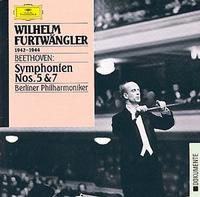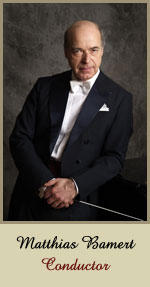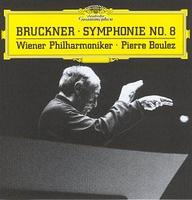Recently I've read an article lambasting one of great interpreters of Mahler. One nice guy pointed to me the latest
"Jascha Horenstein-mania going extinct?" article. For those who're not familiar with the name, Horenstein was the figure behind the great Mahler revival in Britain and his recordings were consistenly featured as benchmark when it comes to Mahler. He was an opposite of what I call "MTV" conductors - Bernstein and Karajan. For Horenstein did not hold a regular post during his conducting life and his best came with recordings with London Symphony Orchestra. He is one of the few "wanderer" conductors who established his niche with lesser known ensembles - just think of Georg Tintner.
I do not have any personal vendetta against Mr Hurwitz. In another article "Historical recordings and business of selling garbage", he states;
"The answer is simple: we are for great recordings -- period. This means no excuses or apologies when it comes to pointing out that some “historical” emperor is actually naked, however much his courtiers may protest or deny the obvious." He is the musical James Randi, an Eduard Hanslick putting on the skeptic hat. We've probably heard before "this Beethoven Fifth by Karajan is good, but I don't think it will surpass the xxx recording made by xxx artist". In a typical Hurwitz fashion he would reply, "xxx recording is bollocks. The strings are sloppy, the winds imbalanced and the brasses are out of tune. This artists disposes rubato like candy, it makes me want to puke. You're saying this Fifth is better than Karajan?" Well Karajan was a Nazi and this recording was made in a Jewish concentration camp, replied the fanboy. Typical Hurwitz response? LOFL, revered names and special historical circumstances does not a great recording maketh.
This is the problem with some classical music reviews these days. I remember the superlative remark Gramophone made
"Aye, the only account worth doing justice to Bruckner's Sixth". They refer that to the Klemperer recording. What I hear was different, the rest of the movement was fine, but the Majestoso was ridden with interpretative fault to the structure. If you read my review, I remarked brass calls and the cross rhythms before the coda was sloppy. Fine interpretation, but doesn't deserve such stupendous superlatives. Some listeners were even disappointed with the hype and pointed out the Horst Stein account with VPO. I was also disappponted with another Klemperer recording, the Das Lied von der Erde on EMI. Never mind the recording took a few years with two different orchestras, the tempo was agonisingly stiff and numb and if not for outstanding two soloists (Fritz Wunderlich and Christa Ludwig) I would've dismissed the recording entirely. This same Das Lied got five stars from Amazon with not a dissenting review and David Hurwitz named it one of benchmark recordings. Whom are we kidding?
Let us be frank with bare facts about historical recordings. First, yes, they're recorded in really bad sound. Stereo wasn't invented until the 50s and digital era and introduction of Dolby noise-reduction methods didn't came until the 80s. Second, yes, the level of playing wasn't "perfect" compared with today's ensambles. Recording method was still at infancy and the performances we hear today comes from either direct, live and broadcast performances or studio sessions. Recordings at studios were alien to conductors. Take into account 78 RPM mediums could only store three to five minutes per side compared with compact discs and DVD medium which can store a continuous feed of a Beethoven Ninth without interuption. Now imagine the torture of Karl Muck's Parsifal recordings (circa 1928)! Nobody would've the sanity to stay back after the session to check for minor flubs and such and no surprise, conductors such as Furtwangler detested such conditions (despite one of greatest studio records he made, the Tristan und Isolde). In contrary, despite the length of today's CD medium, producers temper "live" performances with editings (using snippets from rehearsals or other performances). You would think musicianship of today is more superior than in the past, hogwash! You also have the post World War II aftermath where most ensembles like Vienna Philharmonic started off from scratch due to conditions after war. Economic difficulties made it hard for musicians to earn living, attract audiences, rebuilding concert halls whatmore finding budget to fund high-quality recordings. Third, perfection does not equal good music. You'll only need to hear Christoph von Donanyi Cleveland recordings to figure out "perfection" more of a sense it's too perfect, it's boring. I am not saying it's ok to ignore rehearsals and practice, but at the end of the day we play
music, not simply reading scores or follow composer's instructions and make sure everything's picture perfect. Music is much more than that.
Hearing that, please bear in mind SUBJECTIVE musical tastes of classical music. You do not depend on a critic or rave reviews of a recording to make up your mind what is good and bad, you depend on your EARS and ears alone. Bearing that in mind, you also have to respect other people's preferences. Hurwitz' remark that historical collectors have nostalgia for dead things is an insult to
all discerning classical music fans. It is as if to imply that these collectors are no different than brainwashed celebrities following Kabbalah cult.
There are few kinds of listeners in classical music. One are the sentimentalists or celebrity worshippers. This apply to misguided fan-cults to names such as Bernstein, Callas, Toscanini, Karajan who regard them as God Almighty and all others are judged before them. Two, the perfectionists who will not tolerate any minor flaws and flubs in playing and in Darwinian terms, if you suck you'd be better off cleaning windows elsewhere. Third are the spiritualists who overlook ensemble lapses for great musicality and original interpretations. The last ones are people appreciate
music of all kinds, perfect or imperfect and do not need any reason or pre-requisites and bias to do so.
There is general misconception that people who listen to historical recordings are seniors or "experienced" folks. I am 22 years old and my idols are Furtwangler, Horenstein, Celibidache and Mitropoulos. I have listened to many great digital recordings from my own purchase of CDs, piracy to exchanges from friends, colleagues and relatives. At GAMEFAQS Classical and Jazz music board, there's two Furtwangler fan who is aged between 16 to 18. Now, do these people appreciate Furtwangler as if he's cool? Are they young sentimentalists brainwashed by British reviewers? I think both are Americans. Now there's also the "polar opposite" factor whereas if you like Furtwangler, you hate Karajan and so forth. Perhaps it's the elitist factor which Mr Hurwitz hate where we idolise so-called incompetent conductors as rebellion against well established, but overhyped names (the Radiohead-against-MTV factor). I love Horenstein Mahler and yet I do not hate Bernstein's Mahler though in my humble view, Horenstein is a more superior Mahler interpreter. I cherish Bernstein's VPO recordings of Mahler 5th and 6th, especially the latter which I take it as benchmark. If others think Lenny is more superior than Horenstein I can live with that. But Hurwitz' agenda to purge "incompetent" conductors like Horenstein is akin to a Nazi agenda of purging out all Jews from earth.
Mr Hurwitz, no need to cry wolf that Horenstein "cult" is dying just like Lebrecht crying wolf that the classical music industry is already heading to extinction. The sales of Mahler 3rd by Horenstein is 133,849 at Amazon.com, surpassing another benchmark of Bernstein's M3rds - DG 35,348 and Sony 113,931. Not to mention the Horenstein 3rd is out of stock and sold at ridiculously obscene price at US$30. The BBC releases of broadcast Horenstein recording only sparked further revival and establishment of Horenstein's authority on Mahler and also Bruckner.
Perhaps it is David Hurwitz's worry that must concern all of us;
"Furthermore, an ongoing glut of “new” recordings by old, dead artists can only stifle the incentive to release new performances by living artists active today." The "new artists" could only strive harder. Eiji Oue's Das Lied von der Erde is a benchmark recording today, competing other established names in market - Bernstein, Klemperer, Horenstein, Walter etcs. David Zinman's new Beethoven cycle competes with other contenders like Karajan, Furtwangler, Bernstein, Szell, etcs. Who said who's stiffling who now?
 Beethoven; Symphonies no 5 & 7
Beethoven; Symphonies no 5 & 7



